Splenectomy is a surgical procedure that removes a sore or damaged spleen. Surgical treatment sometimes provokes serious and long-term consequences for the human body. The procedure is performed using the traditional and laparoscopic method.
It is important to undergo rehabilitation treatment under the supervision of a specialist after the operation. Therapy is prescribed taking into account the patient's condition and the individual characteristics of his body.
Record content:
- 1 Advantages and disadvantages
- 2 Indications
- 3 Contraindications
- 4 What examinations need to be done
- 5 Training
- 6 Procedure step by step
- 7 Recovery after
- 8 How long will the result last
- 9 Possible complications
- 10 Videos about life without a spleen
Advantages and disadvantages
Splenectomy is performed using several methods. The doctor selects surgical treatment, taking into account the person's condition, indications for surgery and the individual characteristics of the patient's body.
Splenectomy types:
| Name | Description | Advantages | Flaws |
| Laparoscopy | Medical manipulations are carried out through holes made in the abdominal cavity. | The operation is low-traumatic due to the use of special microinstruments and a laparoscope. | The surgeon is limited in the range of his actions, especially if he has little experience in performing such operations. |
| Laparotomy | Open surgery, during which the doctor performs an upper midline laparotomy. | The surgeon can visually determine the condition of the organ. | High trauma and long recovery period (10-15 days). The person is also disturbed by strong painful sensations. |
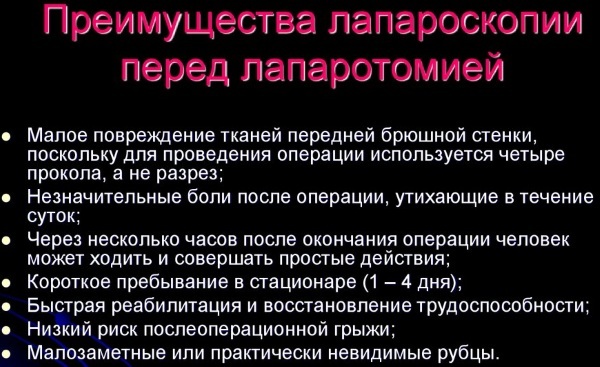
To remove the spleen for certain indications, the surgeon performs a transthoracic splenectomy. Medical manipulations are carried out through the chest.
The sternum is opened, the diaphragm is dissected. The recovery period is long. The thoracoabdominal method is also used, when surgical intervention is performed with the opening of the abdominal cavity and the left pleural region.
In most cases, laparoscopy is performed. Such an operation is the safest and most sparing for the human body. But there are certain contraindications, including the size of the spleen (up to 11-20 cm).
Indications
A severe rupture of the spleen or pathological processes in it require urgent surgical intervention.
Removal of the spleen (the consequences for the body will be minimal if the patient after the operation does not forget about the simple recommendations of a specialist) also carried out for the following indications:
| Name | Description |
| Immune thrombocytopenic purpura | A common benign hematological disease. It is characterized by a low platelet count. Numerous hemorrhages appear on the skin and mucous membranes. |
| Spleen cancer | Malignant processes contribute to the enlargement of the organ. Patients complain of severity and pain in the spleen area. An operation is required, since progressive metastases affect nearby organs. |
| Sickle cell anemia | In most cases, blood diseases are accompanied by malignant processes, so it is necessary to remove the spleen to improve the patient's condition.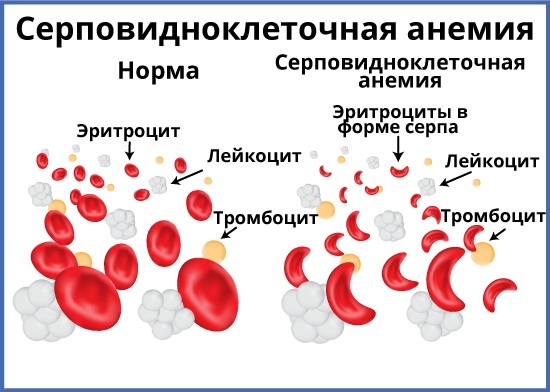
|
| Refractory autoimmune hemolytic anemia | |
| Hodgkin's disease | Malignant pathology, which is characterized by damage to lymphoid tissue and the appearance of specific cells. |
| Spleen infarction | Pathological condition of the organ, against the background of which a dangerous abscess occurs. The purulent-inflammatory process affects the neighboring organs. In this situation, the patient is indicated for an urgent operation, during which the spleen is removed. |
| Purulent abscess | A strong inflammatory process that affects a specific area of the organ. The main reason is trauma to the spleen, degeneration of its tissues, secondary infection against the background of tuberculosis, syphilis or other chronic pathologies. |
| Cyst | A neoplasm can be congenital or acquired. After severe damage to the spleen, cells disintegrate inside the organ, and a liquid is formed. If the integrity of the cyst is violated, the risk of infection of the surrounding tissues increases. It is necessary to remove the neoplasm or completely the spleen.
|
Autoimmune disorders, sarcoidosis, enlarged spleen or severe rupture of the spleen as a result of an accident are also indications for surgical treatment.
Damage to the organ provokes severe pain in the upper abdomen on the left side. A person loses a large amount of blood, against the background of which he has a cardiogenic shock.
Its main symptoms are severe dizziness, pallor of the skin, profuse sweating. Women have cramps in the uterus. In these situations, surgical intervention is indispensable.
Contraindications
There are situations when it is strictly forbidden to carry out surgery, since the risk of complications is as high as possible.
The main contraindications for removing the spleen:
| Name | Description |
| Diseases of the cardiovascular system | Surgical treatment involves the use of general anesthesia. A weak body, under the influence of serious diseases, may not withstand the increased load. |
| Respiratory pathology | General anesthesia is not recommended in some situations for pulmonary diseases. |
| Uncontrolled coagulopathy | A pathological condition characterized by poor blood clotting. If doctors have failed to stabilize the indicators, surgery is contraindicated. |
| Tendency to form adhesions | Pathological changes affect the condition and functioning of the internal organs, which are located next to the spleen. The adhesions exert pressure, so the operation is not performed in such a situation. |

Thermal stage of malignant neoplasm is also a contraindication for splenectomy. The patient himself may not always agree to surgery, since he assesses all the existing risks. Contraindications for splenectomy are also the period of gestation of the baby, portal hypertension and cirrhosis of the liver.
What examinations need to be done
Removal of the spleen (the consequences for the body are a decrease in defenses, since the organ supports the work to a greater extent immune system) is shown in extremely difficult situations when a pathological condition threatens a person's life and contraindications minimal.
Before splenectomy, the doctor consults with the patient in order to obtain the maximum amount of useful information. The patient should describe his condition, talk about taking medications and existing complaints. For a complete diagnosis, a specialist assigns the following tests to a person:
| Name | Description |
| General analysis of blood and urine | The results will help assess the general condition of the patient's body, identify concomitant disorders or diseases. In thrombocytopenia, it is necessary to determine how quickly red blood cells and platelets are destroyed. |
| X-ray studies | The abdominal organs are examined to determine their location. |
| CT scan | The procedure allows you to see as accurately as possible where the spleen is located, existing pathologies and changes in the organ.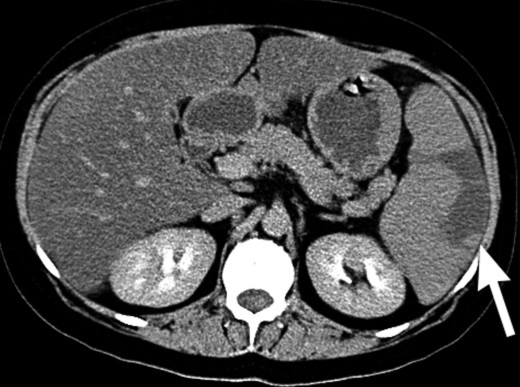
|
| Ultrasound examination (ultrasound) | A diagnostic method that allows you to determine the shape and size of the spleen, as well as pathological disorders in it. |
| Electrocardiogram | The examination helps to assess the functioning of the heart muscle. |
All diagnostic measures are carried out before the operation so that doctors can assess not only the state of the whole organism, but also the spleen separately before removing it.
Training
After surgery, the patient's immunity is weakened for a long time. The risk of encountering pneumonia, meningitis and other infectious diseases increases, due to an increased susceptibility to negative effects on the body. Vaccinations, which are given before the planned splenectomy, will also help prevent complications.
For a successful operation, doctors also provide useful advice to patients so that they properly prepare for the procedure:
- Pass all laboratory and instrumental studies in the direction of a specialist.
- Vaccination before surgery is required for a person to prevent the development of an infectious disease after removal of the spleen.
- Before the operation, you must stop taking any medications for 7 days.
In some situations, patients are given a special diet before splenectomy to clear the intestines or medications for a similar purpose.
Procedure step by step
Laparoscopy is carried out in the following stages:
- The surgeon makes 3-4 incisions in the abdominal area.
- The laparoscope is inserted through the first incision.
- Special tools are introduced through the remaining holes.
- To expand the abdominal cavity and facilitate medical procedures, the doctor fills it with gas.
- By operating the laparoscope and instruments, the surgeon removes the spleen.
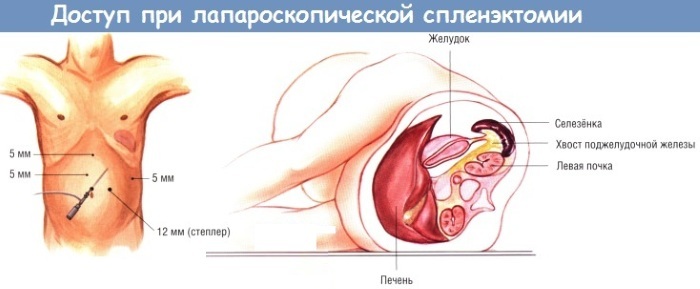
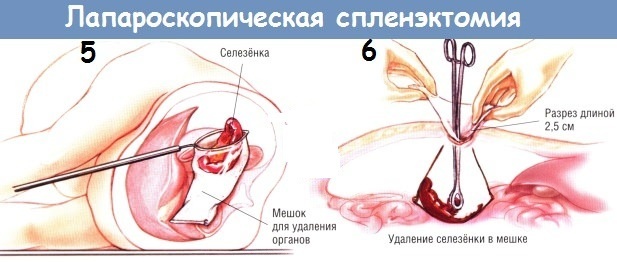
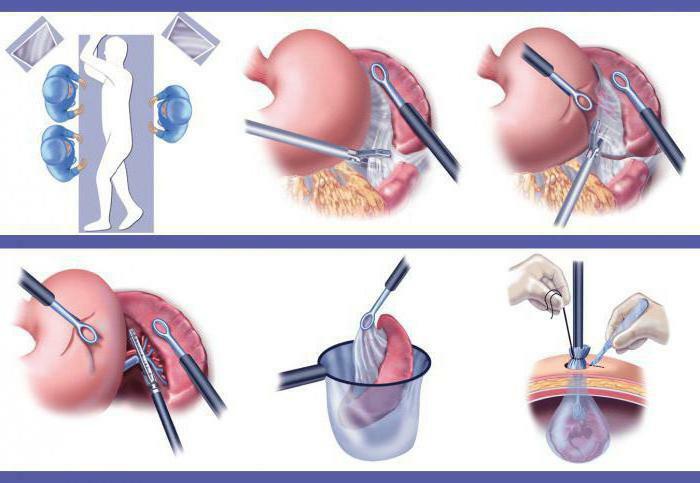
Surgical intervention requires 45-60 minutes. The procedure leaves minimal damage, the patient recovers in a short period.
Step-by-step laparotomy:
- The surgeon makes an incision in the central abdomen or below the ribs on the left side.
- Visualizes the spleen for further removal.
- If the patient is diagnosed with a malignant tumor, the surgeon examines the lymph nodes. In case of damage, the organ is also excised.
- The surgeon checks for bleeding after the spleen is removed.
- Closes the wound.
In most cases, after open surgery, the patient stays in the hospital for 7 days under the supervision of doctors. It is necessary to ensure that there are no serious complications that lead to disability or even death. With laparoscopy, patients go home within 3-5 days.
Recovery after
After surgical treatment, patients are prescribed certain medications. The doctor selects the drugs, taking into account the patient's condition and the individual characteristics of his body. It is important to adhere strictly to the prescriptions, as drugs provoke side effects.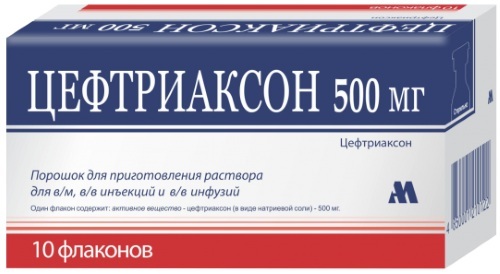
| Drug group | Name | Application |
| Antibacterial drugs | Ceftriaxone, Vancomycin | The daily dosage of the drug depends on the patient's condition. Adults are prescribed 20-60 mg / kg 1 time per day. |
| Anti-inflammatory drugs | Paracetamol, Diclofenac | The drugs reduce painful sensations. Adults are prescribed after meals (1-2 hours) with plenty of water. Patients are prescribed 500-1000 mg every 4-6 hours. The maximum daily dosage is 4 g. |
| Vitamin complexes | Retinol | Vitamin A is taken for medicinal and prophylactic purposes. Adults are prescribed orally after meals after 10-15 minutes. The recommended dosage is 33,000-100,000 IU per day. |
Removal of the spleen (the consequences for the body will depend on the person's condition and compliance with strict prescriptions) is a serious test for the patient. After the procedure, it is important not only to take medications and adhere to certain recommendations.
You can use unconventional recipes of healers and healers. They will help restore the body's strength and increase its resistance to possible infectious or viral diseases.
| Name | Recipe | Application |
| Garlic tincture | Chop the head of garlic and lemon. Add 0.5 liters of water to them, leave for 5 days. | The resulting product is recommended to take 1 tbsp. before eating. The tincture improves immunity well. |
| Herbal collection | Combine sage, thyme, thyme, nettle and black currant in equal portions. Pour 1.5 tbsp. herbal collection with boiling water. Insist the mixture and strain. | The finished medicine is recommended to be taken in 1 tbsp. 3 times a day. |
| Ginger | Grate 200 g of ginger root. Add chopped lemon (2 pcs.) To it, along with the peel, figs (100 g) and dried apricots (100 g). Mix all the ground components well. Add 1 tbsp. natural honey. | The finished product is recommended to be consumed in 1 tsp. every time with tea. |
Honey, lemon and garlic support immunity and increase the body's resistance to various diseases. It is recommended to make decoctions with the described components and take them inside.
After removal of the spleen, the patient must be assigned a dietary meal:
| Featured Products | Prohibited foods |
|
|
The diet should be strictly adhered to for 6 months. The doctor will allow you to expand the menu gradually, if there are no medical contraindications.
Patients after removal of the spleen should additionally adhere to the following recommendations, to prevent dangerous consequences for the body:
- Avoid crowded places where you can contract an infectious disease.
- Conduct additional vaccinations after consulting a doctor.
- Taking a shower or bath is not recommended.
- For painful sensations in the seam area, drink light analgesics that do not contain aspirin. It is better if the medicine is prescribed by a doctor.
- Postpone travel, especially to countries where you can get infected with infectious pathologies (hepatitis, malaria).
- Give up bad habits (alcoholic beverages, tobacco products).

Removal of the spleen results in a lifelong ban on drinking alcohol. - Moderately engage in physical therapy. Exercise helps the body recover faster if the norms are followed.
- Walk more in the fresh air, temper the body, but protect yourself from hypothermia.
- Timely treat viral diseases, against which complications may appear. To do this, visit a doctor for preventive purposes.
Removal of the spleen (the consequences for the body depend on the person, how strictly he will comply recommended doctor's appointments) provides for a rehabilitation period, which takes at least 3-4 months. During this period, you should avoid strenuous physical activity, and also refuse to drive a vehicle.
How long will the result last
The prognosis for patients is favorable if there are no concomitant serious diseases. A person can continue to live normally if he observes the doctor's recommendations and strict restrictions.
The result of surgery and the patient's quality of life directly depends on himself. It is important to be attentive to your health, monitor your diet and maintain immunity. If you feel unwell, consult a doctor immediately. Self-treatment can harm and aggravate your health condition.
Possible complications
If you follow the simple recommendations of the doctor after splenectomy, the consequences are minimal.
In the case when the patient ignores all appointments, he has an increased chance of facing serious complications, up to and including death:
- The immune system is impaired. This is because the spleen produced the largest amount of antibodies and lymphocytes in the human body.
- After surgery, the functioning of the lymph nodes is enhanced.
- Hepatic vein thrombosis develops.
- There is a high likelihood of hernia formation at the site of the incisions.
- There are inflammatory processes in the pancreas.
- The lungs are affected by atelectasis.
- Leukocytosis. The disease provokes an increase in the level of leukocytes (white blood cells). The patient is not only prescribed medication, but also recommended to adhere to a strict diet.

- The functioning of the liver, gallbladder, gastrointestinal tract is impaired.
After removing the spleen, a person may face infectious diseases, since the organ that was removed provided protection against the development and reproduction of pathogenic bacteria.
Splenectomy also negatively affects blood composition. The changes last for life. Against the background of hypercoagulation and an increased level of platelets in a person after surgery, the likelihood of developing thrombosis of the vessels of the brain and pulmonary artery increases.
After removing the spleen, there is always a risk of serious complications and even death. In most cases, patients who have undergone surgery continue to live their normal and fulfilling lives. If you follow medical recommendations, you can easily prevent the consequences for the body.
Article design: Vladimir the Great
Videos about life without a spleen
How to live without a spleen:



